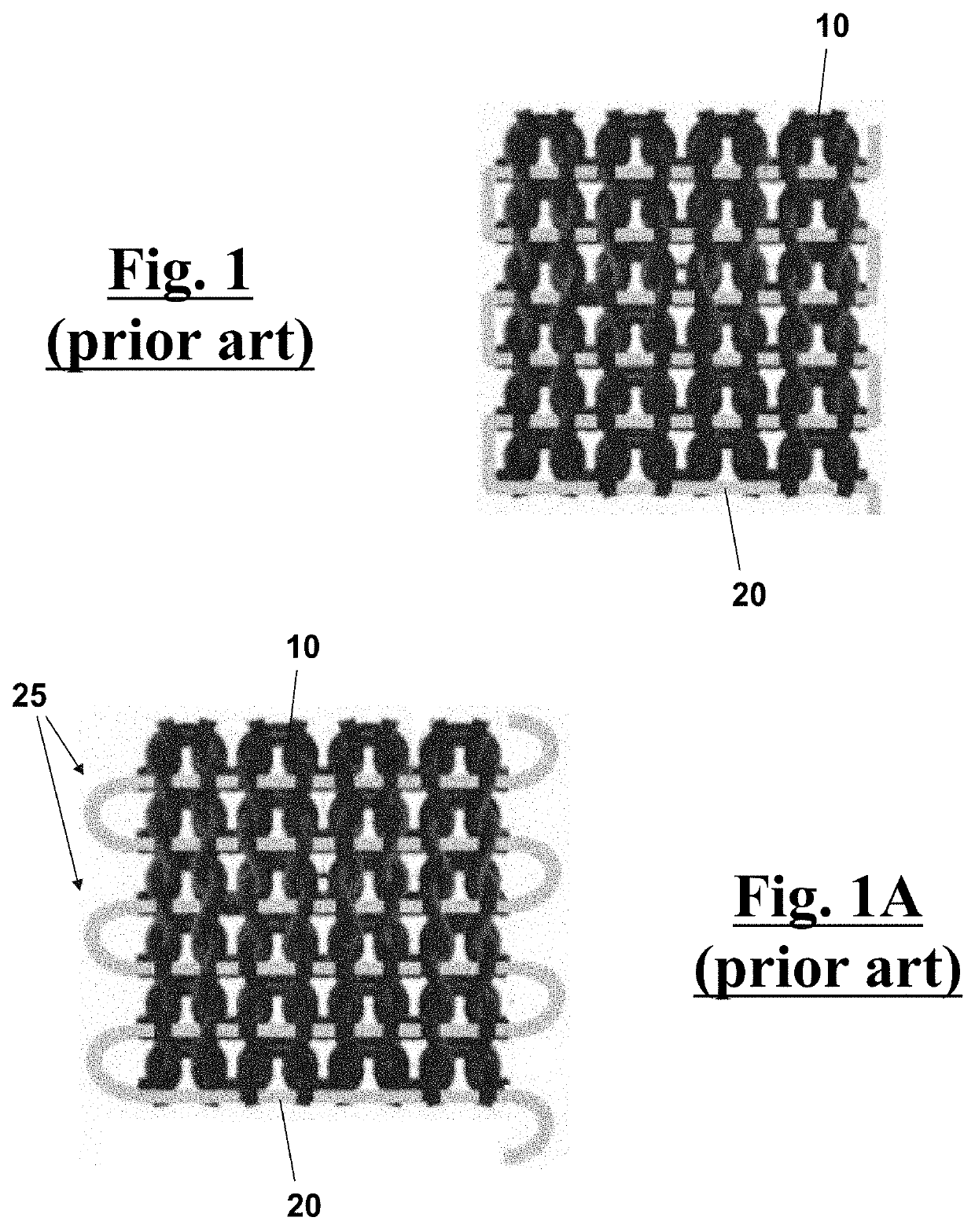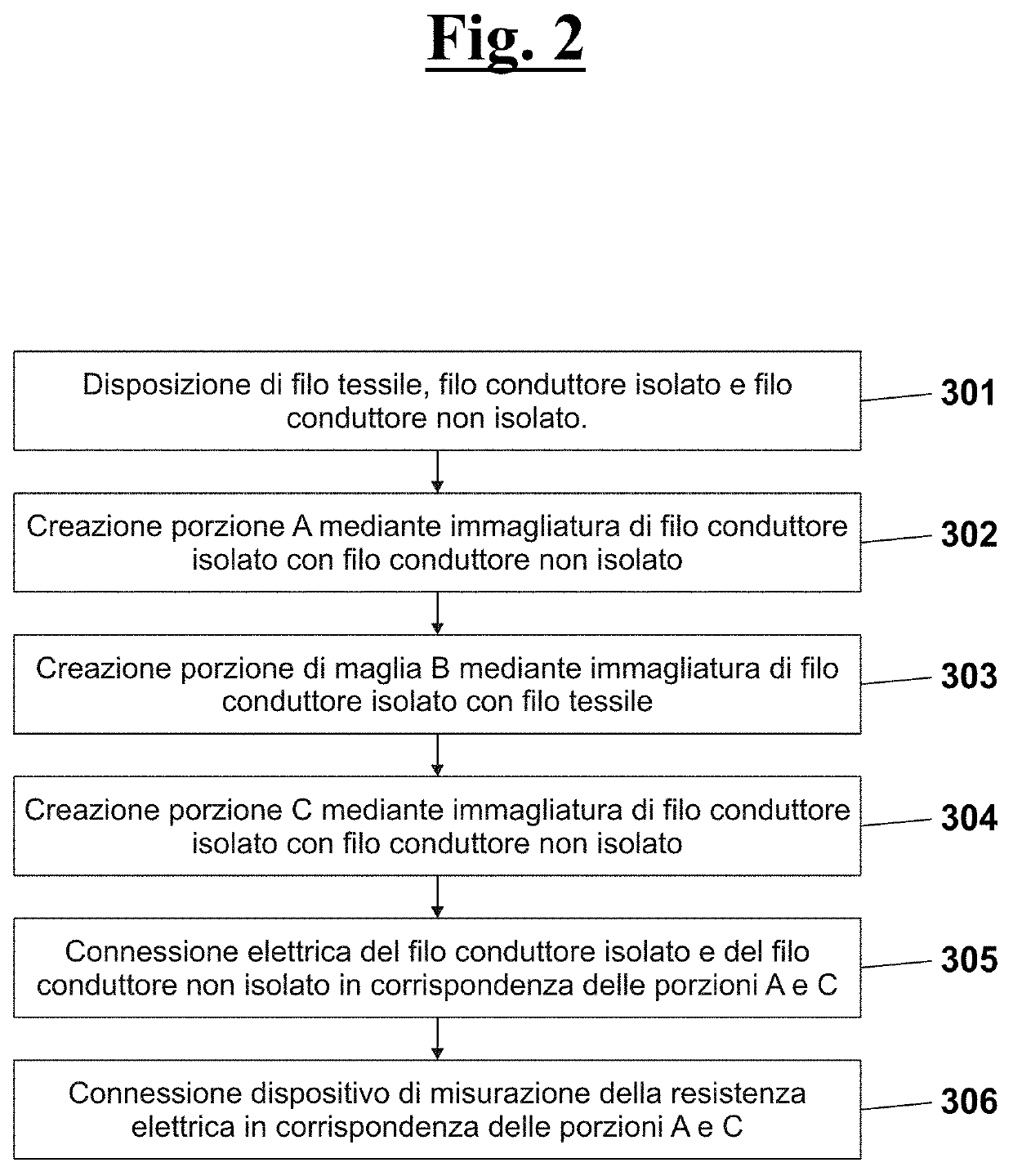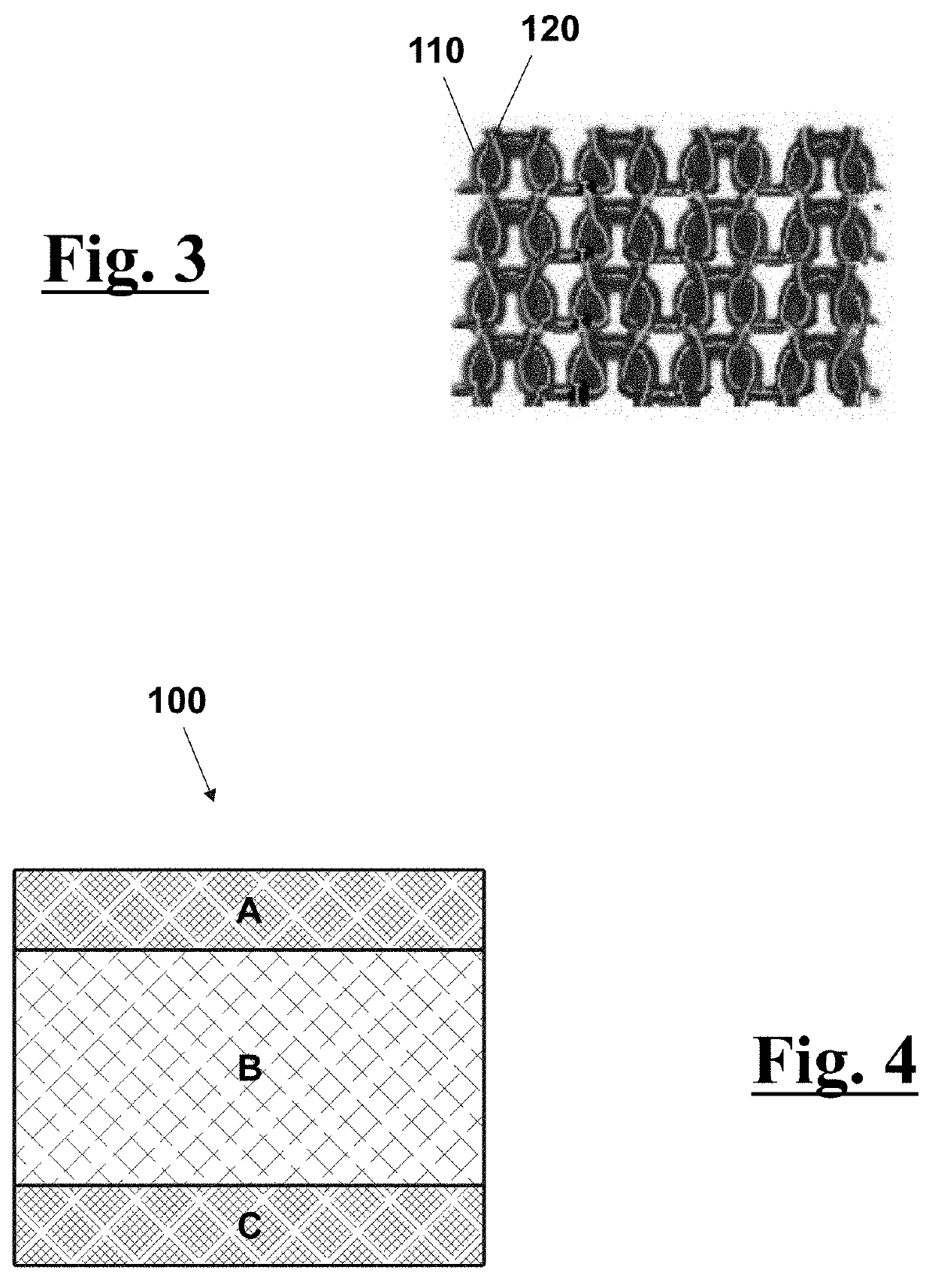Method for producing a textile sensor
a textile sensor and sensor technology, applied in the field of thermometers, can solve the problems of increasing the number of inserts, limiting the diameter of the conductive wire, irreversible damage of the thermometer, etc., and achieves the effects of improving the sensitivity of temperature detection, reducing the section, and increasing the length of the wir
- Summary
- Abstract
- Description
- Claims
- Application Information
AI Technical Summary
Benefits of technology
Problems solved by technology
Method used
Image
Examples
Embodiment Construction
[0072]In FIG. 2 schematically shows the steps of the method necessary, according to the present invention, to generate the textile temperature sensor 100 of FIG. 4.
[0073]In particular, in a preliminary step [301] a textile wire 110, a conductive insulated wire 120 and a not conductive insulated wire are arranged on respective thread-guides of a linear knitting machine. The conductive insulated wire 120 can be, for example, an enameled copper wire, whereas the not conductive insulated wire can be, for example, a tinned copper wire. The textile wire 110 can be, for example, a polyester wire.
[0074]Then you proceed meshing the wires. With reference to FIGS. 2 and 4, following the generation of the portions from A to C, you have the following steps of meshing:[0075]portion A: meshing conductive insulated wire 120 and not conductive insulated wire [302];[0076]portion B: meshing conductive not insulated and textile wire 110 [303];[0077]portion C: meshing conductive insulated wire 120 and n...
PUM
| Property | Measurement | Unit |
|---|---|---|
| conductive | aaaaa | aaaaa |
| electric resistance measuring | aaaaa | aaaaa |
| electric resistance | aaaaa | aaaaa |
Abstract
Description
Claims
Application Information
 Login to View More
Login to View More - R&D
- Intellectual Property
- Life Sciences
- Materials
- Tech Scout
- Unparalleled Data Quality
- Higher Quality Content
- 60% Fewer Hallucinations
Browse by: Latest US Patents, China's latest patents, Technical Efficacy Thesaurus, Application Domain, Technology Topic, Popular Technical Reports.
© 2025 PatSnap. All rights reserved.Legal|Privacy policy|Modern Slavery Act Transparency Statement|Sitemap|About US| Contact US: help@patsnap.com



